Quick search
CTRL+K
Quick search
CTRL+K

Schwerin is the capital of the state of Mecklenburg-Western Pomerania and the historic residence city of the dukes and grand dukes of Mecklenburg-Schwerin. It is the home to loads of elegant and magnificent buildings in the beautifully situated town on the lake Schweriner See, where you can enjoy various lovely lake cruises.
The most famous building is Schwerin Palace, which is a true fairy tale castle with its many towers and spiers. It is a must to visit during a tour of the city, but there are also many other large buildings within a pleasant walking distance. Along the way you can enjoy the fine pedestrian streets and squares located in the old town.
The cathedral and market square are major sights in Schwerin’s old town, while the nearby shopping street Mecklenburgstraße is definitely also worth a stroll with its shops and cafes. The street opens onto Lake Pfaffenteich, which is one of the city’s many cozy oases, next to the banks of Schweriner See and the gardens by the palace.
The nature around Schwerin offers many possibilities for excursions. Boat trips on the Schweriner See and walks in large gardens are good choices, but the city’s lovely beach is also close to the center, a short drive to the cozy Zippendorf district. At Zippendorf you also find the district Großer Dreesch, which is an example of urban planning from the GDR.
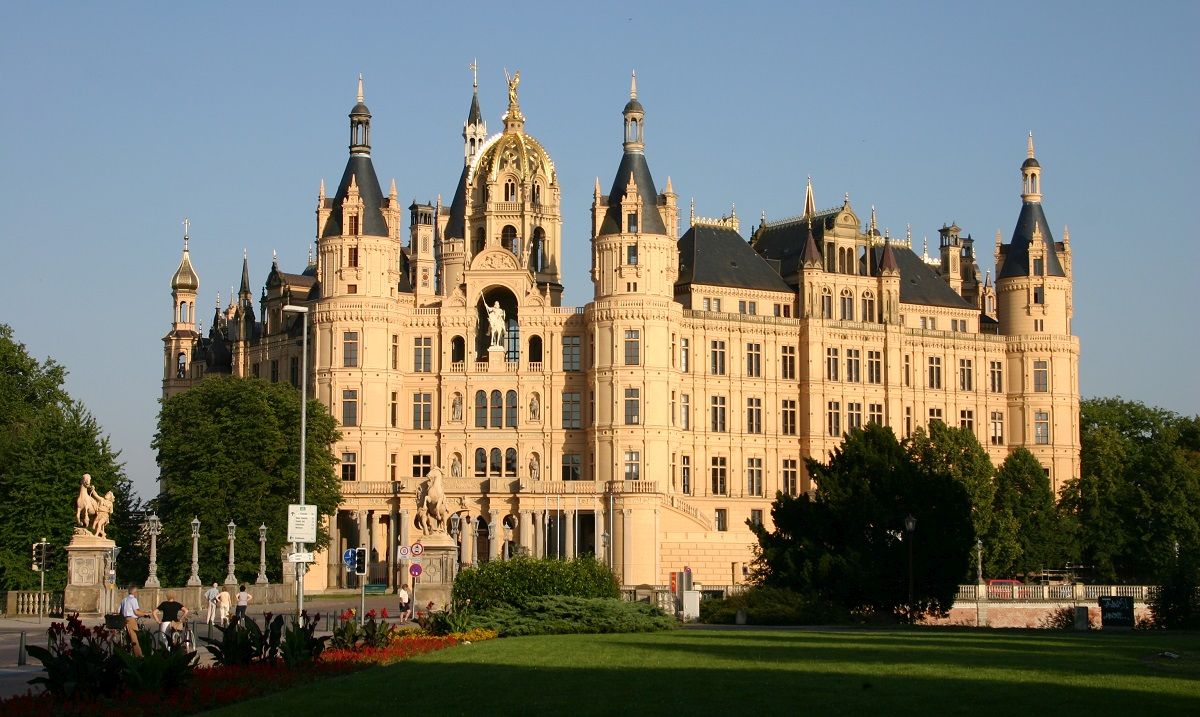
Schwerin’s most famous building is the fairy-tale castle, which with its many golden towers, spires and ornamentation is an unforgettable sight. The castle is located on an island in the Schweriner See with a connection to the Alter Garten to the northwest and the Schloßgarten garden to the south.
A castle building has stood on the site for almost a millennium. The first was called Zuarin and burned down in 1160. Zuarin’s successor became the seat of first the Dukes of Schwerin and later also the Grand Dukes of Mecklenburg-Schwerin.
During the 1500s and 1600s, the castle was rebuilt in a palatial style instead of the previous one, which had more of a castle look. However, it would take until the 19th century before Schweriner Castle took on its current appearance. The inspiration was taken from the French Château de Chambord, and one of Germany’s most enchanting castles became a reality.
With Germany’s conversion from monarchy to republic in the November Revolution of 1918, Mecklenburg-Schwerin’s last Grand Duke, Friedrich Franz IV, ruled until 14 November 1918. The castle became state property and from 1921, parts of the Grand Duke’s former residence were opened to the public.
Today, the castle is the seat of the Landtag in the German state of Mecklenburg-Vorpommern, but a museum, the Schloßmuseum, has also been set up so that visitors can enjoy part of the many beautiful rooms. Among the open spaces are the dukes’ representation rooms and the fantastically decorated throne room.
Outside the castle, but still on the castle lake, is the Burggarten garden, which is also worth a trip. Here is a beautiful orangery, a cave down towards Schweriner See and much more. Schwerin Castle also has a spirit that befits a castle. It is said that the nice Petermännchen lives in the basement.
The central square in Schwerin is called the Markt, and it is surrounded by interesting buildings, most of which were built as residential houses. Gable houses, the town’s old town hall in a partly English Tudor style are a couple of them, but the square is dominated by the nearby cathedral, which towers over the relatively low buildings on the Markt.
On the Market Square is the Lion Monument/Löwendenkmal, a stele with a lion figure on top. The monument is from 1995 and was erected on the occasion of the 800th anniversary of Henrik Løve’s death. Löve was Schwerin’s founder.
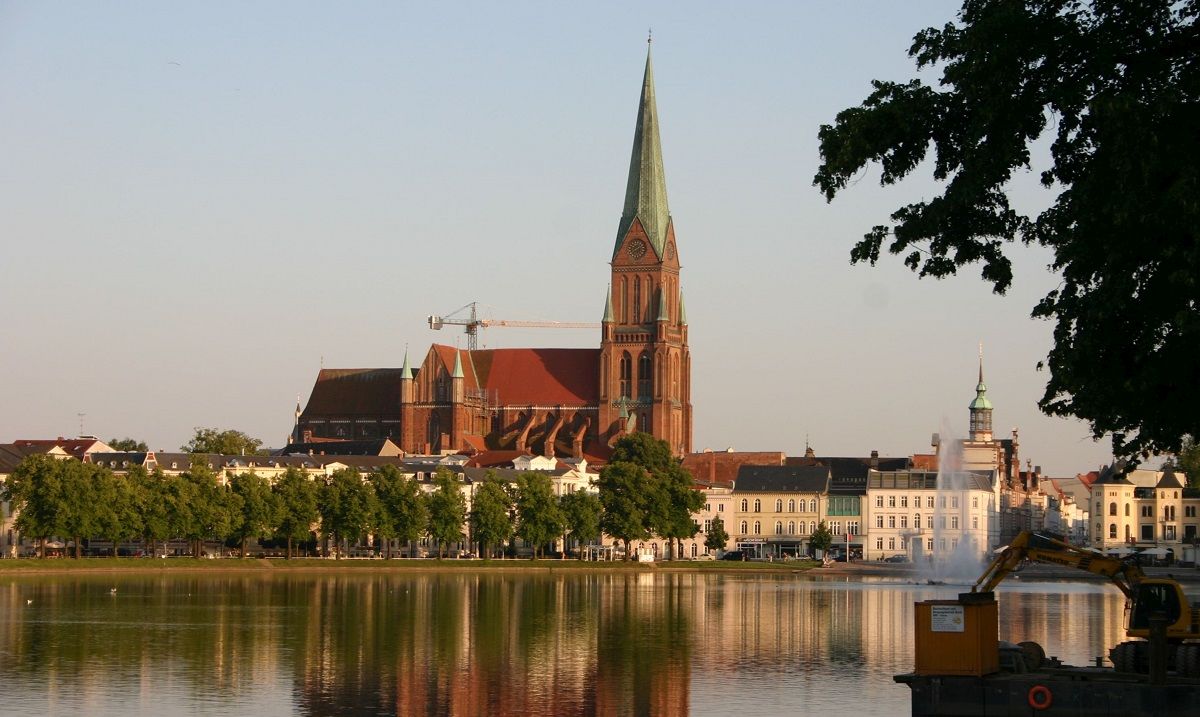
With its 117.5 meter high spire, Schwerin Cathedral is the most striking profile in the old town’s skyline, and the church is even almost as long as it is tall. With its impressive size, Schwerin Cathedral is also one of Northern Germany’s largest churches in the so-called Brick Gothic style. The construction period was the years 1260-1416, however, the impressive tower was first erected in 1889-1893.
The 105-metre-long church building was built on the site of a former Romanesque church, of which only the Gate of Paradise, Paradiespforte, has been preserved as part of the current south wall.
Among the exciting interior are a bronze font from 1325, the organ with 5,100 pipes and the Triumfkorset/Triumphkreuz from 1420. It originally hung in the Marienkirche in Wismar, but when this was demolished in 1961, the cross was moved.
In the cathedral there are also epitaphs for a number of Mecklenburg dukes. You can also climb the church tower, and you are rewarded with a good view of central Schwerin.
Schloßstraße is Schwerin’s splendid street with one prestigious building after another. The street leads the short way from Den Gamle Have/Alter Garten to the city centre. Most of the larger, classicist buildings now house various public offices for the state of Mecklenburg-Vorpommern, whose capital is Schwerin.
Along the street are Kollegiengebäude I and II, Altes Palais, among others. They are all worth seeing, as is the trip to the Alter Garten and the view is the city castle.
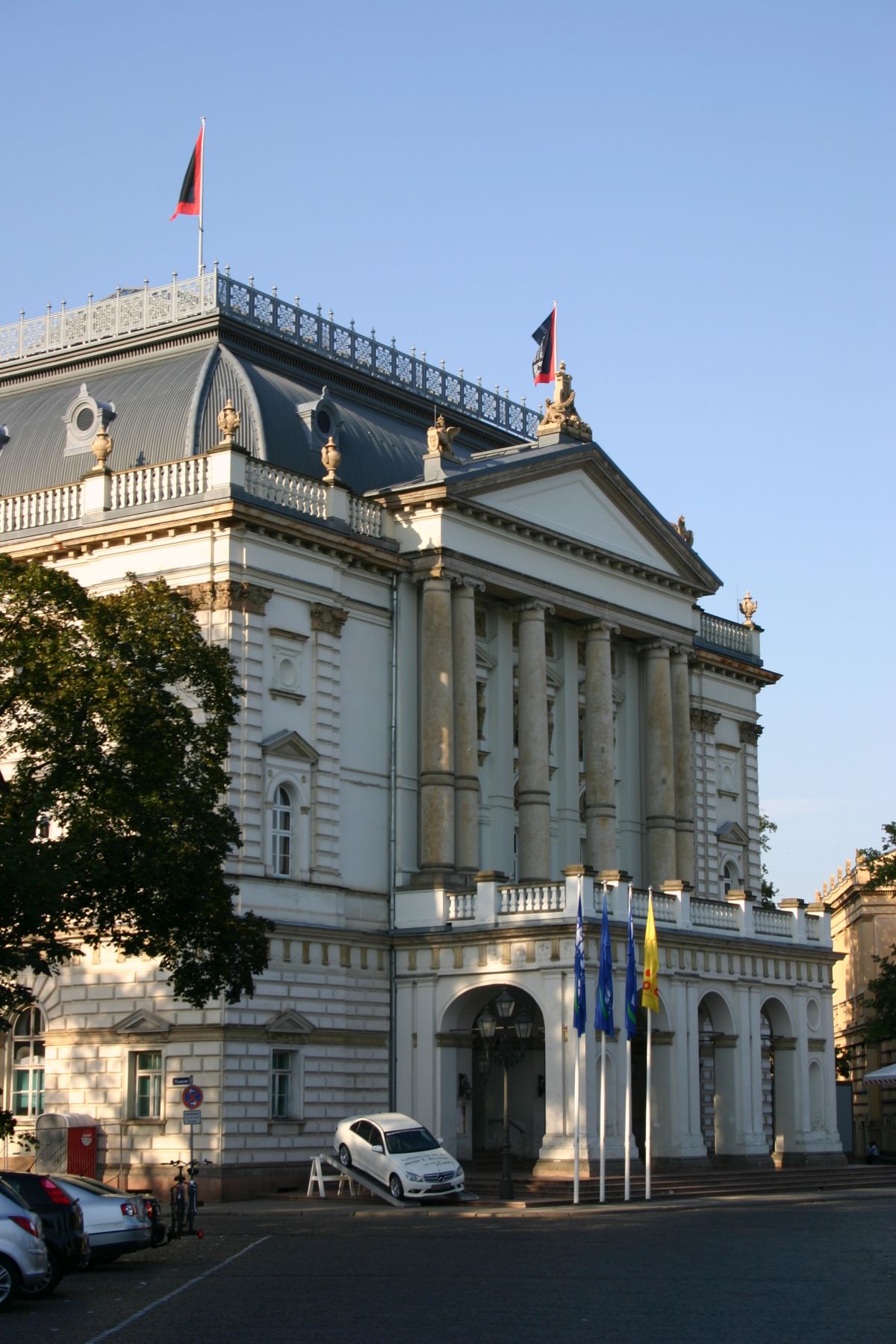
The Mecklenburgisches Staatstheater is the name of Schwerin’s elegant state theater, which was built 1883-1886 in neo-baroque with inspiration from the Italian Renaissance. The music and theater tradition in the city already started under Duke Johann Albrecht I in 1563, and an actual theater building was located here since 1753. The former court theater burned down in 1882, and therefore the current one was built.
It was the court architect Georg Adolf Demmler who designed the Mecklenburgisches Staatstheater for the builder and Grand Duke Franz Friedrich III. It was one of the finest theaters of the time, and in the years 1919-1933 it was also used as the parliament for the Free State of Mecklenburg-Schwerin. Today, the theater is one of the leading theaters in Northern Germany, and the place is the stage for both ballets, operas and theatrical performances.
The Staatlisches Museum is the art museum of the state of Mecklenburg-Vorpommern, and here you can not least admire one of the country’s finest collections of works by Flemish and Dutch painters from the 16th-17th centuries, such as Peter Paul Rubens and Frans Hals. However, there are also other and more recent works on the program such as works by Pablo Picasso, Ernst Barlach and Caspar David Friedrich. You can also see copper engravings and handicrafts at the museum.
The museum building was built 1877-1882 under Grand Duke Friedrich Franz II as the gallery Staatsgalerie, and it was the architect Hermann Willebrand who was behind the Greek-style design with Ionic columns at the entrance. The museum was originally a private museum, but with the November Revolution in 1918, Grand Duke Friedrich Franz IV was forced to abdicate. The Großherzogliche Museum became a state museum, and the Grand Duke’s collections became the property of the state.
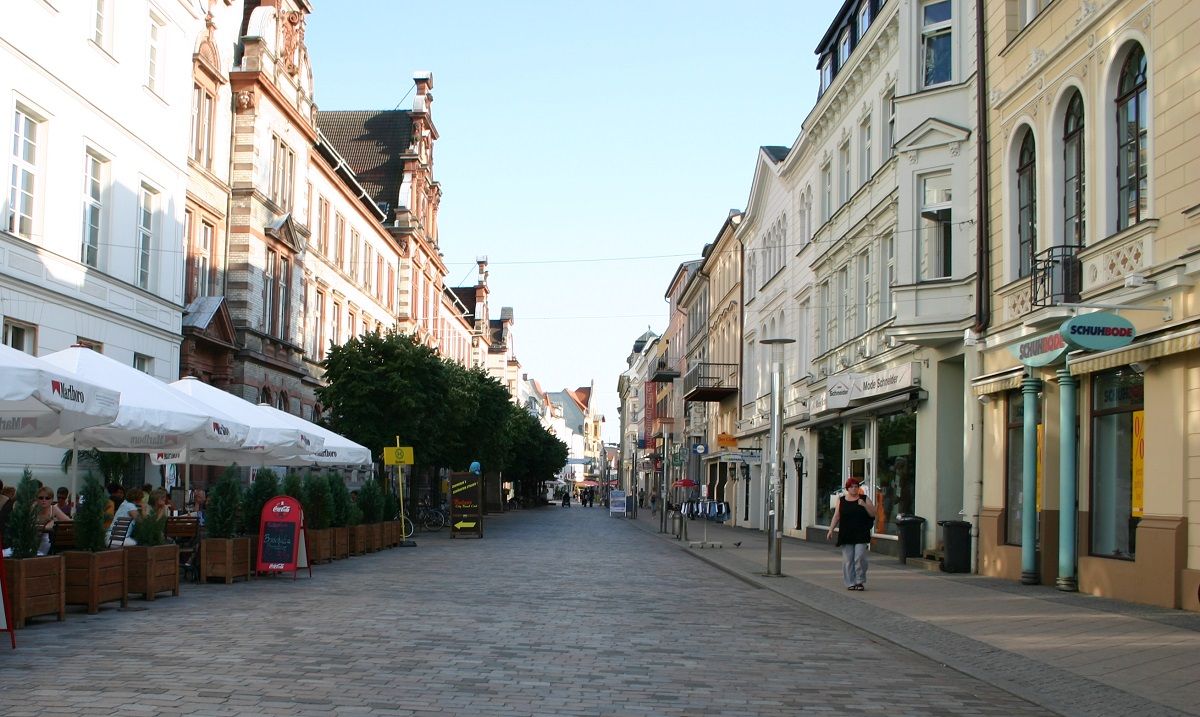
The Mecklenburgstraße pedestrian street is Schwerin’s main shopping district. In addition to the many temptations of shops and eateries, the street connects the central districts and areas of interest in Schwerin from Pfaffenteich and Arsenalstraße in the north to Graf-Schack-Allee and Platz der Jugend in the south.
In the Middle Ages, part of Schwerin’s city wall lay east of the current road, and west of this wall there was a stream that, among other things, supplied an important water mill with water. In the 1840s, Georg Adolf Demmler built an office building in the northern part of that piece, and then the expansion went fast, and the electricity was laid in pipes. From 1908, trams also ran in the busy street.
Mecklenburgstraße has had many names over time, and it got its current one in 1991. Among the buildings worth seeing, you can see the Demmler-Haus from 1843 with number 1 and Schwerin’s former neo-renaissance main post office from 1897 with number 4/6. In the street you can also see varying architecture with, for example, half-timbered and Art Nouveau represented.
At the embankment between the stables of Schwerin Castle and the castle, you can board a lake cruise on the Schweriner See with magnificent views to the city. The shortest tour concentrates mostly on Schwerin itself, and the longer ones can take you all the way around both parts of Schweriner See.
Regardless of which tour you choose, it is exciting to see the city from the lake, and not least the castle. In addition to very beautiful scenery, it is interesting to look to the west and the old Schwerin skyline in contrast to the modern one from the GDR era to the south.
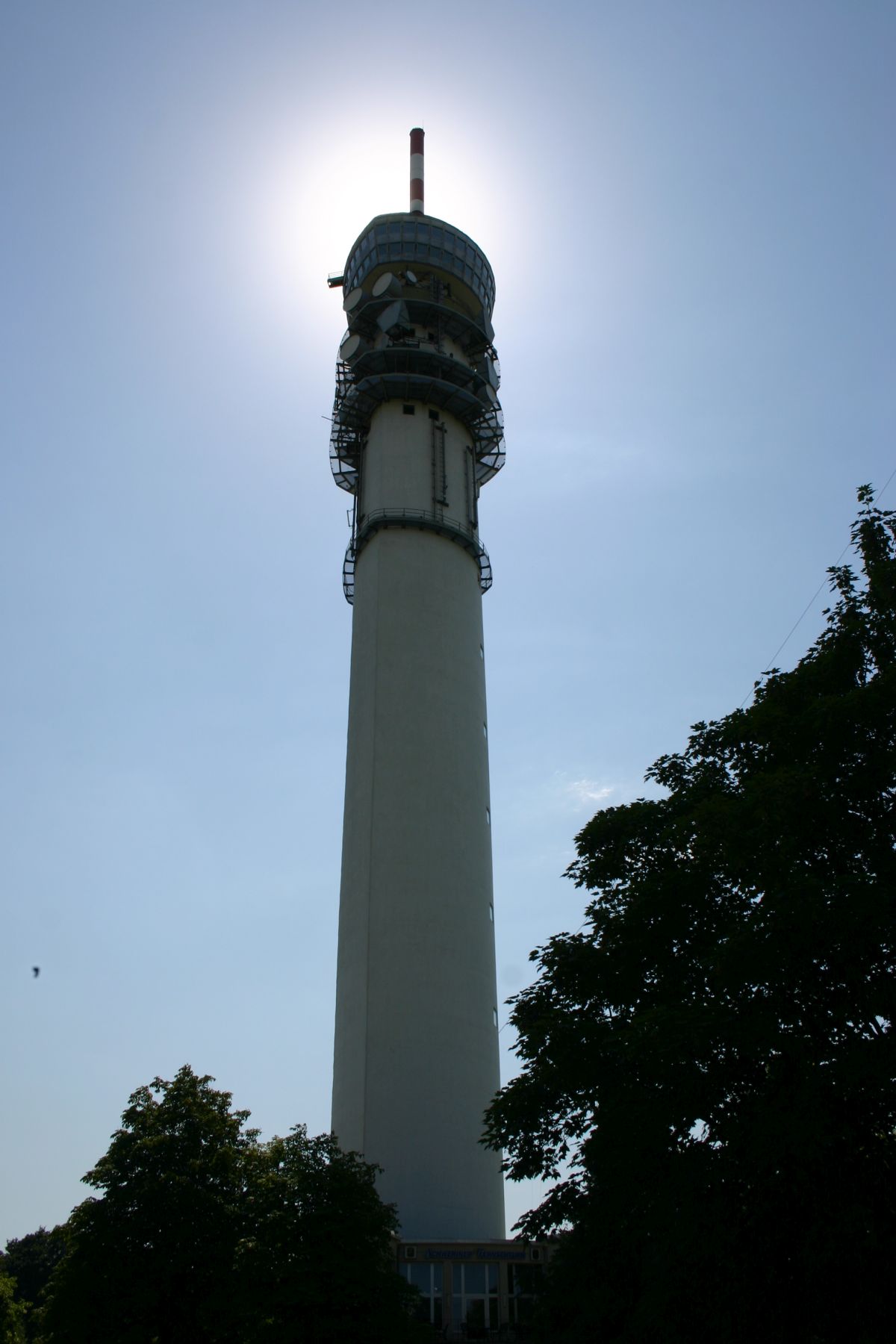
With its 138 meters, Schwerin’s television tower rises above the entire city and is even higher than the spire of the cathedral. From the tower there is a unique view over the whole of Schwerin and over the landscape with the extensive forests and the Schweriner See, Germany’s third largest lake. Of course, you can also see the GDR district Großer Dreesch from above.
The Schweriner Fernsehturm was built from 1957 to 1964, and in 1964 the 273-meter high transmission mast next to the TV tower was erected. At the top of the TV tower there are two floors, one with a 360-degree panoramic view and one with a restaurant. The restaurant is 100 meters high, while the panoramic deck is 97.5 meters up.
Schloßgarten is a 25-hectare park south of Schwerin Castle. The central part was built in the style of the baroque sea tanks in the mid-18th century, when Duke Christian Ludwig II hired Jean Laurent Legeay for the work in 1748. French Legeay renewed the then palace garden with avenues, a cross canal and other inspiration from, among other things, Versailles’ park facilities.
The 18th-century park was eventually expanded and partially landscaped, which happened in 1840-1852 according to the plans of the Prussian horticulturist Peter Joseph Linné. Since then, further changes have taken place so that you can still enjoy the baroque garden, an English landscape garden, sculptures and a garden pavilion. The core is considered one of the finest Baroque buildings in Northern Germany, and the other part is also worth seeing.
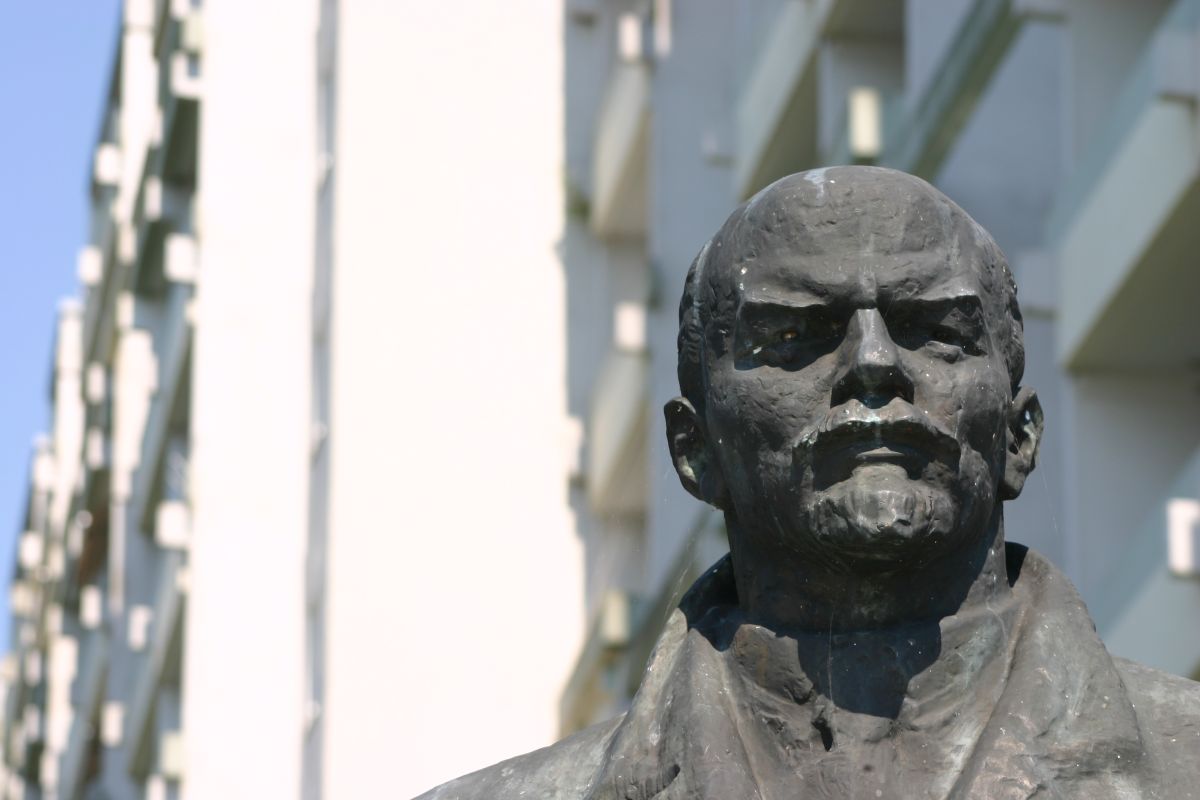
The district of Großer Dreesch is a different attraction, and it originally consisted (in the time before German reunification) of the current districts of Großer Dreesch, Neu-Zippendorf and Mueßer Holz.
Großer Dreesch is a typical GDR suburb that was built in the so-called Plattenbau, which is construction in ready-made components. Although the origin of Plattenbau comes from Le Corbusier, it was during the time of the communist states in Eastern Europe that countless constructions were erected in the style known from various places in the GDR, among others.
The district is Schwerin’s most populous, and it is particularly well located with a short tram ride to Schwerin’s old town, with views over the waters of Schweiner See and around the cozy Zippendorf with the town’s beach.
The first sod was broken for Großer Dreesch in 1971, and if you move around the district, it is an impressive number of apartments, halls, shops, etc., that were built in the following 15 years, before German reunification put an effective stop to further Plattenbau.
Among the highlights of Großer Dreesch and the similar neighboring district of Neu Zippendorf is literally the TV tower, and then the Lenin statue on the corner of Hamburger Allee and Plater Straße is also an interesting and now rare sight. You can form an impression by walking around the area or riding the tram line that cuts through both parts of the city.
The Schleifmühle is an interesting grinding mill, idyllically situated by the lake Fauler See. The mill stands as a partial reconstruction of the original mill from the middle of the 18th century, which functioned as a stone mill. Later, a wool spinning mill was also established on the site, where production stopped in 1904. Today, the facility consists of the mill itself and the Schleifmüllerhaus, which was the stone grinder’s residence.
During the 1980s reconstruction, the historical stone processing technology was rebuilt, and then the Schleifmühle functioned as a museum. Thereby you can see the machines that are driven by water power using the water wheel of 4.5 meters in diameter, and how stone was processed hundreds of years ago. The mill is powered by the difference in water level between the lakes Fauler See and Schweriner See.
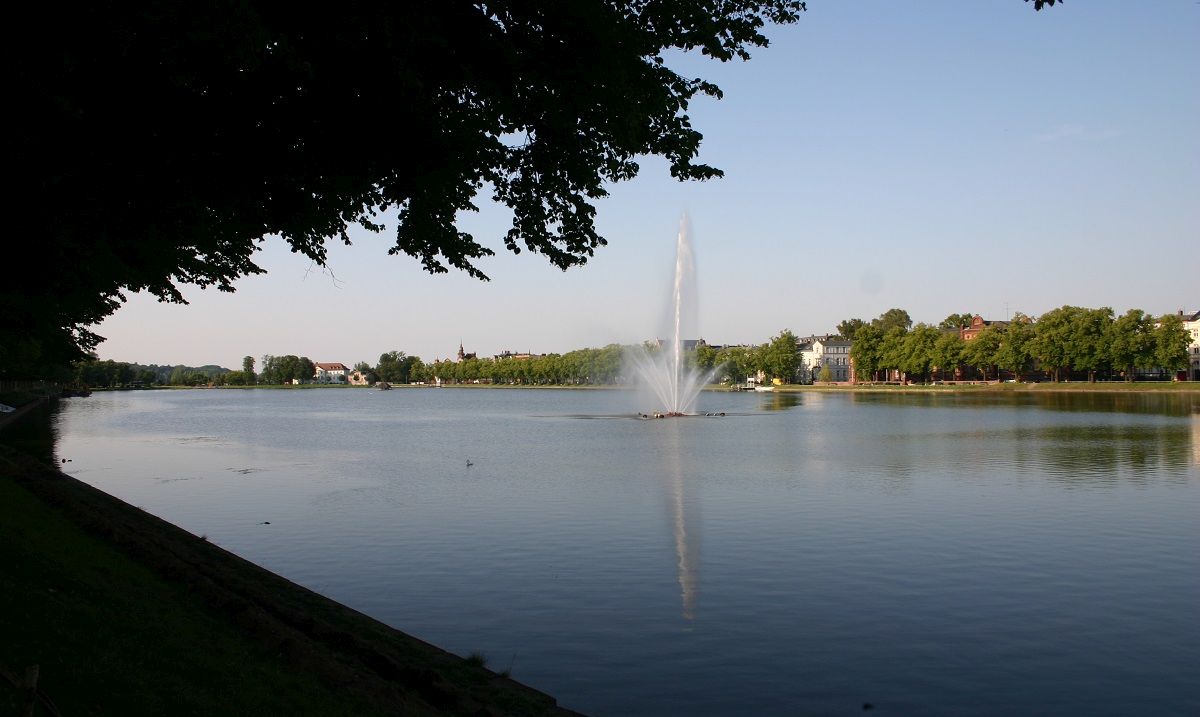
Pfaffenteich is an artificial lake that leads all the way into the heart of the city. The cozy and well-stocked pedestrian street, Mecklenburgstraße opens at the banks of the Pfaffenteich, and right here in front is a large fountain out into the lake.
You can take a small tour boat around the lake or simply enjoy the lovely atmosphere especially on the southern shore at Mecklenburgstraße.
Schelfstadt is the district of Schwerin that lies immediately east of Lake Pfaffenteich. It became part of Schwerin in 1705, but there had also been settlements here before. As an official part of the city, a new development started, as merchants and artisans became the main forces behind, thanks to favorable prices for land and construction.
The Schelfkirche church was built shortly after, and an original residential building was fitted out as the district’s new town hall in 1776; Neustädtisches Rathaus. Examples of distinguished private constructions are the beautiful mansion Neustädtisches Palais (Puschkinstraße 19), also called Marienpalais. It was built in 1779, rebuilt in 1878 and now houses the state’s Ministry of Justice.
Schelfstadt is one of Schwerin’s nicest districts. Everywhere in the streets you feel taken back in time with a mixture of larger buildings and half-timbered townhouses. The street Münzstraße has been renovated and partially reconstructed, so here are many houses that give a good overall impression of Schelfstadt’s many impressions.
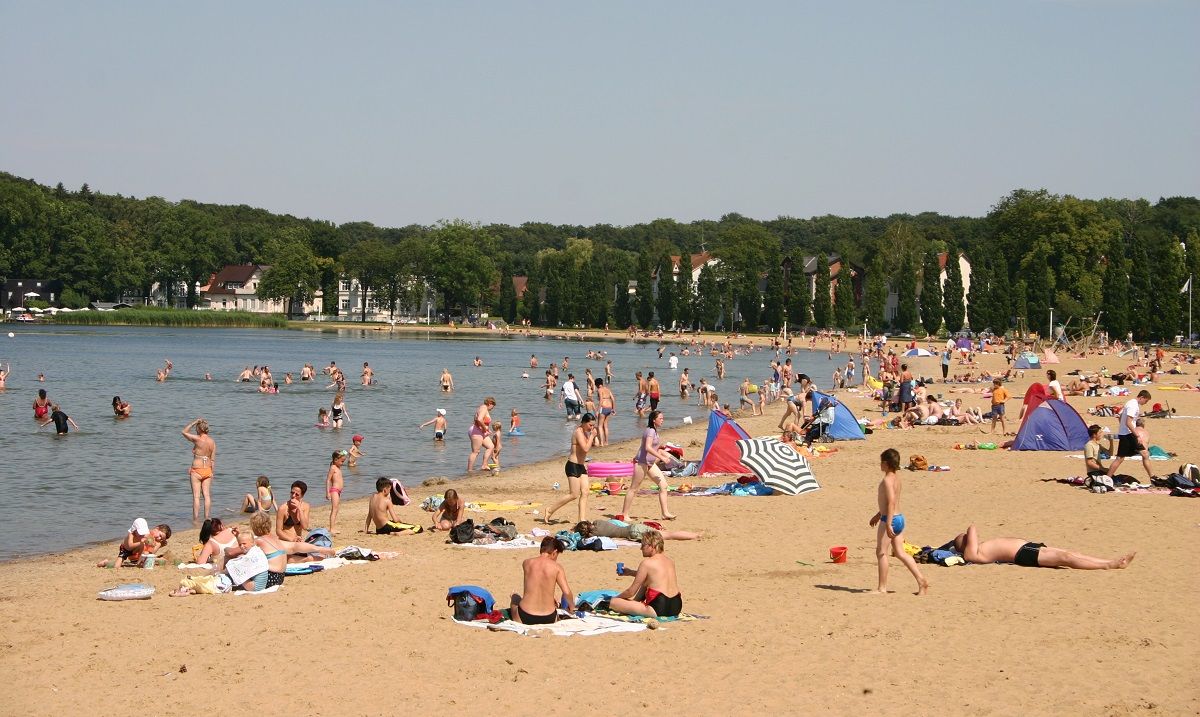
On the southern shore of Schweriner See lies the cozy town of Zippendorf, known for its lovely promenade with a pristine sandy beach and stately 19th-century mansions along the promenade.
In the summer, the beach is full of bathers, and many make the trip from Schwerin’s old town here along the lakeside hiking trail, Franzosenweg, which starts from the Castle Park and meanders through beautiful green areas.
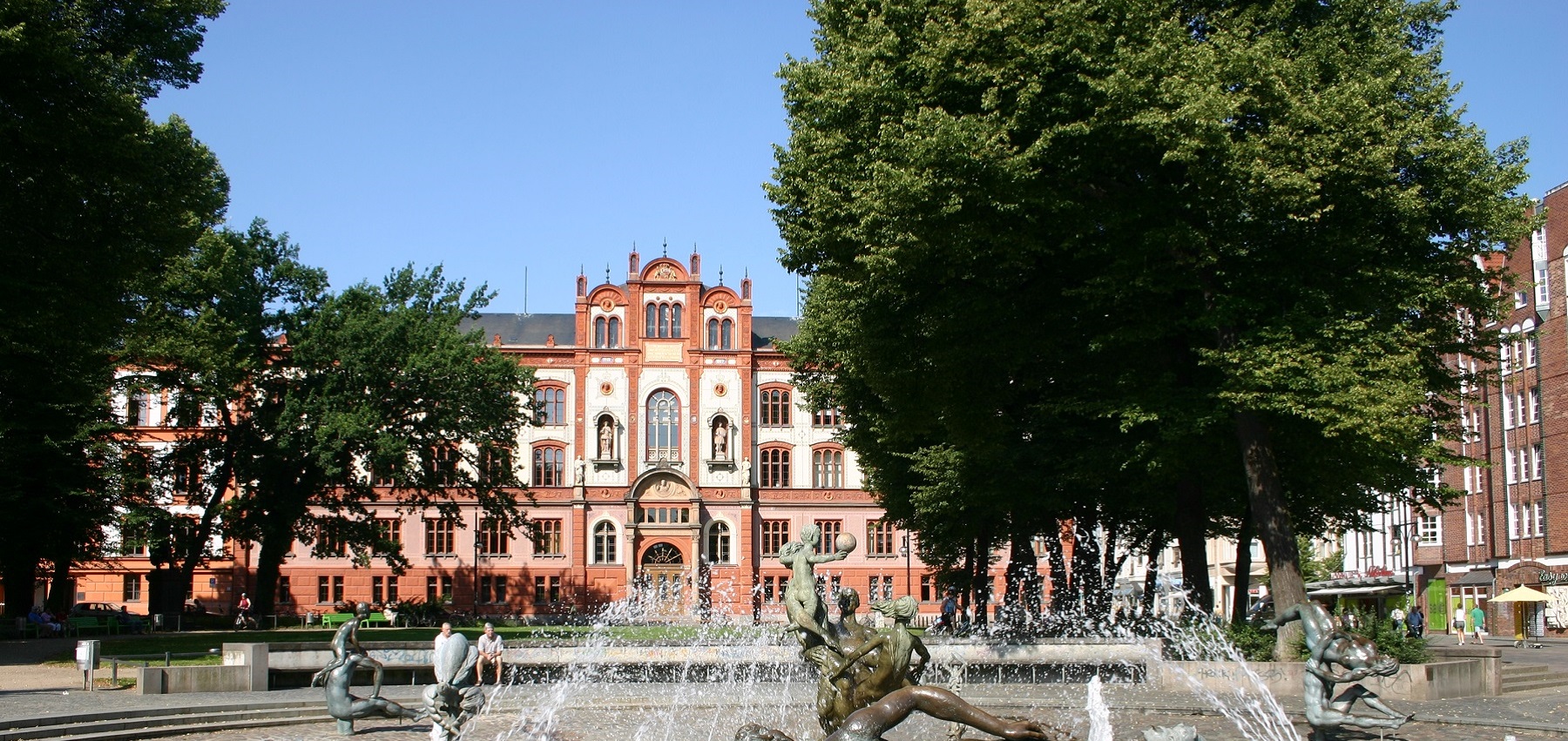
Rostock is one of the northern German cities, which grew with the Hanseatic League’s trade and financial success, and its historical wealth has been the source to a lot of constructions, that can be seen today as well. Large churches, the region’s oldest university and a lot of culture are some of the things you can look forward to in Rostock, which has also benefited from the investments of both former dukes and the GDR.
Rostock is a small metropolis with all that it entails. Business districts and shopping malls, good restaurants and a varied cityscape provide many choices of activities during a visit. A walk in the city center is the best way to explore the city where it is never far between sights.
Güstrow is a city in Mecklenburg-Western Pomerania with a city center worth seeing that has been built up through centuries of exciting development. Today, the city is known for, among other things, its Renaissance castle, which stands on the site where a Wendish castle was already built in 1219.
Today’s castle in Güstrow was built from 1558 by Duke Ulrich of Mecklenburg. The time was in the Renaissance, and in terms of style, the castle is an interesting mix of German, French and Italian architecture. In the middle of the 17th century, the last duke of Güstrow had the castle modernized with the baroque gatehouse and the castle bridge that leads from the gatehouse to the castle. Today the castle is set up as a museum, and below the beautiful building you can take a walk in the castle’s impressive garden.
In addition to the castle, there are many other sights in Güstrow, where you can take a short walk in the old town. Here you will find, among other things, Markedet/Markt, where the city’s elegant town hall is located. Just behind the town hall you can visit Our Lady Parish Church/Pfarrkirche St. Marien, which in its original version was consecrated in 1308.
Not far from Market and St. Marie is the Güstrow Domkirke/Güstrower Dom (Domplatz), which is an impressive church building in the typical North German brick Gothic style. The church was completed in 1335, and in addition to the building itself, Ernst Barlach’s famous sculpture Den Svævende/Der Schwebende can be seen here.
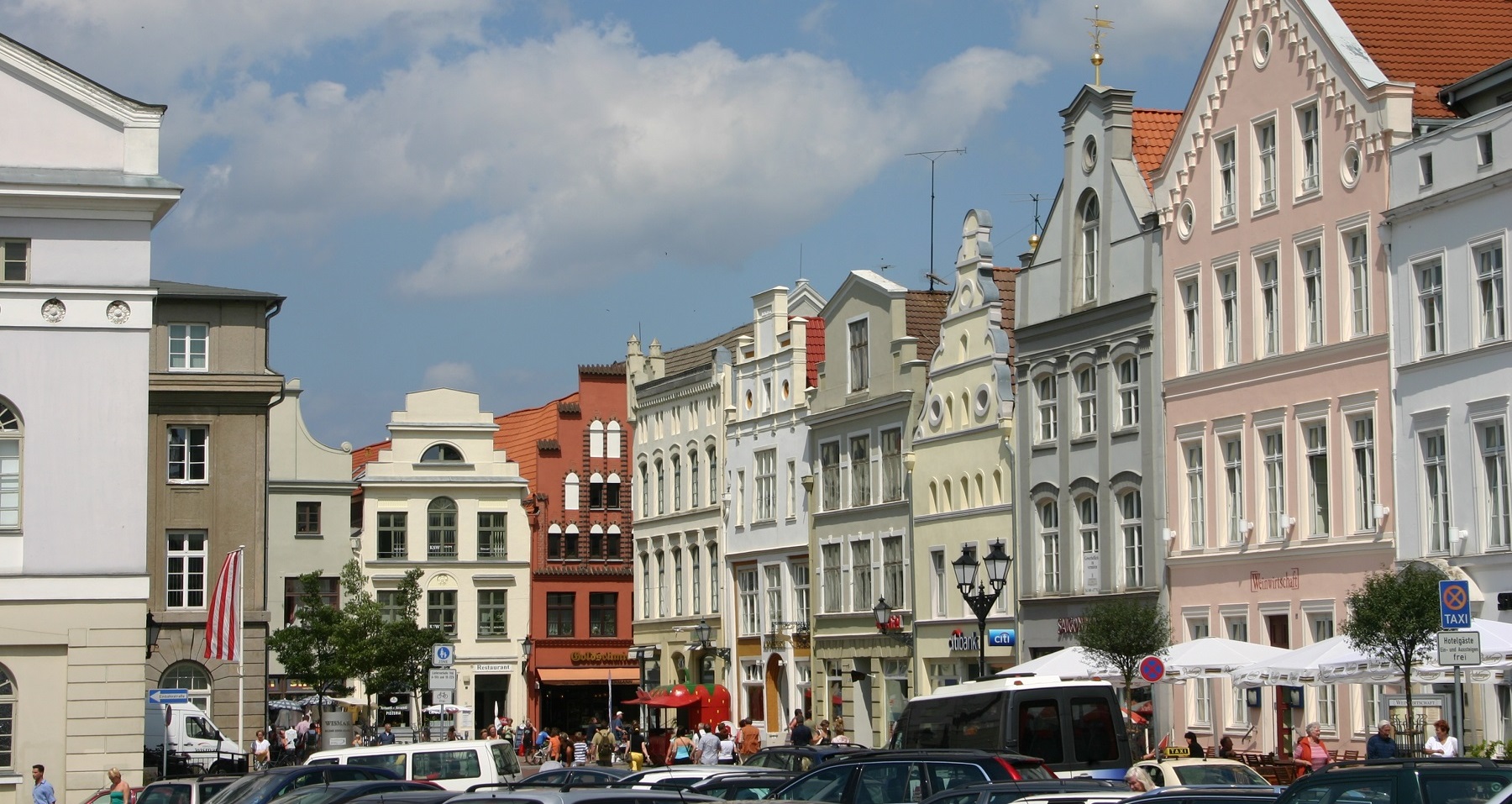
Wismar is one of the historic North German Hanseatic cities, where you can see many old buildings in the so-called Brick Gothic architecture. The architecture is typical of the once prosperous cities of the Hanseatic League, and among other things, the three major churches radiate the atmosphere from the city’s economically thriving commercial history.
The churches of St. Georgen and St. Nikolai stand beautifully as the great old churches that are. The third of Wismar’s three mighty churches, the Marienkirche, was destroyed during World War II and is today it is only the church tower with the contours of the other buildings which remains. It provides an interesting perspective in the old center of the city.

Lübeck was the queen of the Baltic Sea Region’s Hanseatic cities. It still is, and that is not without reason. Majestic churches and countless houses, monasteries and other medieval buildings stand as evidence of the immense wealth that came to the city over the centuries with trade routes.
The old town of Lübeck is located on an island in the Trave River, which provides a natural boundary for this part of the city where everything is within walking distance. In addition, the river and its banks are like a blue-green belt around the city, which can be enjoyed in many places, for example on a river boat, where you sail the Trave around the center of Lübeck.
Marienplatz
schlosspark-center-schwerin.de
Grabenstraße 1
siebenseencenter.de
Mecklenburgstraße, Friedrichstraße, Puschkinstraße, Schloßstraße, Marienplatz
Stadtrundfahrt
Markt
petermaennchen-stadtrundfahrten.de
Internationales Feuerwehrmuseum
Hamburger Allee 68
ifm-schwerin.de
Schweriner Fernsehturm
Hamburger Allee 72-74
schweriner-fernsehturm.de
Seerundfahrt
Werderstraße
weisseflotteschwerin.net
Zoo Schwerin
An der Crivitzer Chaussee 1
zoo-schwerin.de
From the 9th century there was a West Slavic settlement of abodrits in the lake area of present-day Schwerin. At that time, the place was known as Zuarin, a precursor to today’s city name. Crusade against the Slavic people in the region started in 1147 with a Danish army and led by Henry the Lion.
In 1160, Henry the Lion overcame the Abodic leader Niklot and Zuarin, and he became the founder of the modern city. Monks moved monasteries to the city, which in 1167 became the capital of the new county of Schwerin.
City rights were introduced in 1228, where a town council with six councilors and a mayor was established. At the same time, the counties and the bishop of the city were powerful entities, each of which influenced the development of the city, including the initiation of a new cathedral.
The first city defense was built of wood, but in 1340 a powerful stone wall was completed. The city had three city gates to land, and the natural foreclosure to Lake Schweriner See also formed an essential part of the defense; here was the castle on the island where the castle is today.
Mecklenburg’s Duke Albrecht II was a descendant of Niklot, and he besieged Schwerin in 1358 through months with his army. The same year, Schwerin’s Count family extinct Gunzelin, and Albrecht II bought the town for 20,000 silver land.
Schwerin thereby became part of the Duchy of Mecklenburg. Albrecht II made the city his residence, making it the political and cultural center of Mecklenburg. Economically, the northern Hanseatic cities, such as Rostock and Wismar, developed more than Schwerin, but maintained its position as the center of the region.
From around 1500, the residence castle was rebuilt and expanded into a larger and representative castle. The 16th century and the following centuries were also periods of great expansion of the city. Large public buildings and private mansions shot up; in the new Schelfstadt district, which was laid out as part of Schwerin itself in 1705.
In 1621, Mecklenburg was divided, but Schwerin’s status was maintained. From that time it became the capital of the new duchy of Mecklenburg-Schwerin.
1731-1735 Prince Christian Ludwig had a hunting castle erected in Ludwigslust outside Schwerin. It was used extensively, and in 1756 a relocation of the court to this began. Officially, Ludwigslust was the Duke’s residence in the period 1765-1837, before Schwerin again became the court’s hometown; a status that lasted until the disintegration of the monarchy in 1918.
Throughout the 19th century Schwerin was rebuilt from its medieval structure with city walls and older wooden houses. Larger buildings and wide streets were built, and splendid mansions shot up not least the state administration.
It was also the time when railway stations, theater and museums were built in great style. In 1904, the city’s electricity plant was opened, and the new power enabled the electric trams to enter four years later.
Political upheaval marked the time after World War I. Germany transitioned from monarchy to republic, and the Grand Duke abdicated in 1918. After that, Schwerin became the capital of the new state formation; the Free State of Mecklenburg-Western Pomerania.
In the 1930s there were big plans to change Schwerin to be a model example of a logistically and transport technically efficient capital in the administrative units called Gau; Schwerin had become the center of Gau Mecklenburg in 1934. Magnificent buildings and parades were to be erected, but they were not completed.
At the end of World War II, Schwerin was captured by American troops on May 2, 1945. On July 1, Soviet soldiers joined the city, becoming part of the GDR. After a new administrative division in DDR 1952, Schwerin became the administrative city in the area of the same name.
During the GDR, Schwerin’s suburbs were greatly expanded with residential blocks; among others in the suburb of Großer Dreesch, which shot up from 1971. The city center should also have been renovated and modernized, but as in the 1930s, the big plans did not materialize. However, large public buildings were added, such as the city’s TV tower and the sports and congress hall from 1964.
After the German reunification in 1990, the former state of Mecklenburg-Western Pomerania was re-established as a federal state, and Schwerin became a new government seat; this time for the country day and the state’s prime minister.
Today, Schwerin stands as new after a series of restorations of the many beautiful buildings. Also, the green areas with the castle garden at the forefront stand as in ancient glory, and among major events, the national German garden exhibition, Bundesgartenschau, took place in the city in the summer of 2009.
 Schwerin, Germany[/caption]
Schwerin, Germany[/caption]
Overview of Schwerin
Schwerin is the capital of the state of Mecklenburg-Western Pomerania and the historic residence city of the dukes and grand dukes of Mecklenburg-Schwerin. It is the home to loads of elegant and magnificent buildings in the beautifully situated town on the lake Schweriner See, where you can enjoy various lovely lake cruises.
The most famous building is Schwerin Palace, which is a true fairy tale castle with its many towers and spiers. It is a must to visit during a tour of the city, but there are also many other large buildings within a pleasant walking distance. Along the way you can enjoy the fine pedestrian streets and squares located in the old town.
The cathedral and market square are major sights in Schwerin’s old town, while the nearby shopping street Mecklenburgstraße is definitely also worth a stroll with its shops and cafes. The street opens onto Lake Pfaffenteich, which is one of the city’s many cozy oases, next to the banks of Schweriner See and the gardens by the palace.
About the Whitehorse travel guide
Contents: Tours in the city + tours in the surrounding area
Published: Released soon
Author: Stig Albeck
Publisher: Vamados.com
Language: English
About the travel guide
The Whitehorse travel guide gives you an overview of the sights and activities of the Canadian city. Read about top sights and other sights, and get a tour guide with tour suggestions and detailed descriptions of all the city’s most important churches, monuments, mansions, museums, etc.
Whitehorse is waiting for you, and at vamados.com you can also find cheap flights and great deals on hotels for your trip. You just select your travel dates and then you get flight and accommodation suggestions in and around the city.
Read more about Whitehorse and Canada
Canada Travel Guide: https://vamados.com/canada
City tourism: https://visitwhite-horse.ca
Main Page: https://www.vamados.com/
Buy the travel guide
Click the “Add to Cart” button to purchase the travel guide. After that you will come to the payment, where you enter the purchase and payment information. Upon payment of the travel guide, you will immediately receive a receipt with a link to download your purchase. You can download the travel guide immediately or use the download link in the email later.
Use the travel guide
When you buy the travel guide to Whitehorse you get the book online so you can have it on your phone, tablet or computer – and of course you can choose to print it. Use the maps and tour suggestions and you will have a good and content-rich journey.


The Mecklenburgstraße pedestrian street is Schwerin’s main shopping district. In addition to the many temptations of shops and eateries, the street connects the central districts and areas of interest in Schwerin from Pfaffenteich and Arsenalstraße in the north to Graf-Schack-Allee and Platz der Jugend in the south.
In the Middle Ages, part of Schwerin’s city wall lay east of the current road, and west of this wall there was a stream that, among other things, supplied an important water mill with water. In the 1840s, Georg Adolf Demmler built an office building in the northern part of that piece, and then the expansion went fast, and the electricity was laid in pipes. From 1908, trams also ran in the busy street.
Mecklenburgstraße has had many names over time, and it got its current one in 1991. Among the buildings worth seeing, you can see the Demmler-Haus from 1843 with number 1 and Schwerin’s former neo-renaissance main post office from 1897 with number 4/6. In the street you can also see varying architecture with, for example, half-timbered and Art Nouveau represented.
At the embankment between the stables of Schwerin Castle and the castle, you can board a lake cruise on the Schweriner See with magnificent views to the city. The shortest tour concentrates mostly on Schwerin itself, and the longer ones can take you all the way around both parts of Schweriner See.
Regardless of which tour you choose, it is exciting to see the city from the lake, and not least the castle. In addition to very beautiful scenery, it is interesting to look to the west and the old Schwerin skyline in contrast to the modern one from the GDR era to the south.

With its 138 meters, Schwerin’s television tower rises above the entire city and is even higher than the spire of the cathedral. From the tower there is a unique view over the whole of Schwerin and over the landscape with the extensive forests and the Schweriner See, Germany’s third largest lake. Of course, you can also see the GDR district Großer Dreesch from above.
The Schweriner Fernsehturm was built from 1957 to 1964, and in 1964 the 273-meter high transmission mast next to the TV tower was erected. At the top of the TV tower there are two floors, one with a 360-degree panoramic view and one with a restaurant. The restaurant is 100 meters high, while the panoramic deck is 97.5 meters up.
Schloßgarten is a 25-hectare park south of Schwerin Castle. The central part was built in the style of the baroque sea tanks in the mid-18th century, when Duke Christian Ludwig II hired Jean Laurent Legeay for the work in 1748. French Legeay renewed the then palace garden with avenues, a cross canal and other inspiration from, among other things, Versailles’ park facilities.
The 18th-century park was eventually expanded and partially landscaped, which happened in 1840-1852 according to the plans of the Prussian horticulturist Peter Joseph Linné. Since then, further changes have taken place so that you can still enjoy the baroque garden, an English landscape garden, sculptures and a garden pavilion. The core is considered one of the finest Baroque buildings in Northern Germany, and the other part is also worth seeing.

The district of Großer Dreesch is a different attraction, and it originally consisted (in the time before German reunification) of the current districts of Großer Dreesch, Neu-Zippendorf and Mueßer Holz.
Großer Dreesch is a typical GDR suburb that was built in the so-called Plattenbau, which is construction in ready-made components. Although the origin of Plattenbau comes from Le Corbusier, it was during the time of the communist states in Eastern Europe that countless constructions were erected in the style known from various places in the GDR, among others.
The district is Schwerin’s most populous, and it is particularly well located with a short tram ride to Schwerin’s old town, with views over the waters of Schweiner See and around the cozy Zippendorf with the town’s beach.
The first sod was broken for Großer Dreesch in 1971, and if you move around the district, it is an impressive number of apartments, halls, shops, etc., that were built in the following 15 years, before German reunification put an effective stop to further Plattenbau.
Among the highlights of Großer Dreesch and the similar neighboring district of Neu Zippendorf is literally the TV tower, and then the Lenin statue on the corner of Hamburger Allee and Plater Straße is also an interesting and now rare sight. You can form an impression by walking around the area or riding the tram line that cuts through both parts of the city.
The Schleifmühle is an interesting grinding mill, idyllically situated by the lake Fauler See. The mill stands as a partial reconstruction of the original mill from the middle of the 18th century, which functioned as a stone mill. Later, a wool spinning mill was also established on the site, where production stopped in 1904. Today, the facility consists of the mill itself and the Schleifmüllerhaus, which was the stone grinder’s residence.
During the 1980s reconstruction, the historical stone processing technology was rebuilt, and then the Schleifmühle functioned as a museum. Thereby you can see the machines that are driven by water power using the water wheel of 4.5 meters in diameter, and how stone was processed hundreds of years ago. The mill is powered by the difference in water level between the lakes Fauler See and Schweriner See.

Pfaffenteich is an artificial lake that leads all the way into the heart of the city. The cozy and well-stocked pedestrian street, Mecklenburgstraße opens at the banks of the Pfaffenteich, and right here in front is a large fountain out into the lake.
You can take a small tour boat around the lake or simply enjoy the lovely atmosphere especially on the southern shore at Mecklenburgstraße.
Schelfstadt is the district of Schwerin that lies immediately east of Lake Pfaffenteich. It became part of Schwerin in 1705, but there had also been settlements here before. As an official part of the city, a new development started, as merchants and artisans became the main forces behind, thanks to favorable prices for land and construction.
The Schelfkirche church was built shortly after, and an original residential building was fitted out as the district’s new town hall in 1776; Neustädtisches Rathaus. Examples of distinguished private constructions are the beautiful mansion Neustädtisches Palais (Puschkinstraße 19), also called Marienpalais. It was built in 1779, rebuilt in 1878 and now houses the state’s Ministry of Justice.
Schelfstadt is one of Schwerin’s nicest districts. Everywhere in the streets you feel taken back in time with a mixture of larger buildings and half-timbered townhouses. The street Münzstraße has been renovated and partially reconstructed, so here are many houses that give a good overall impression of Schelfstadt’s many impressions.
Similar to Schwerin Travel Guide
